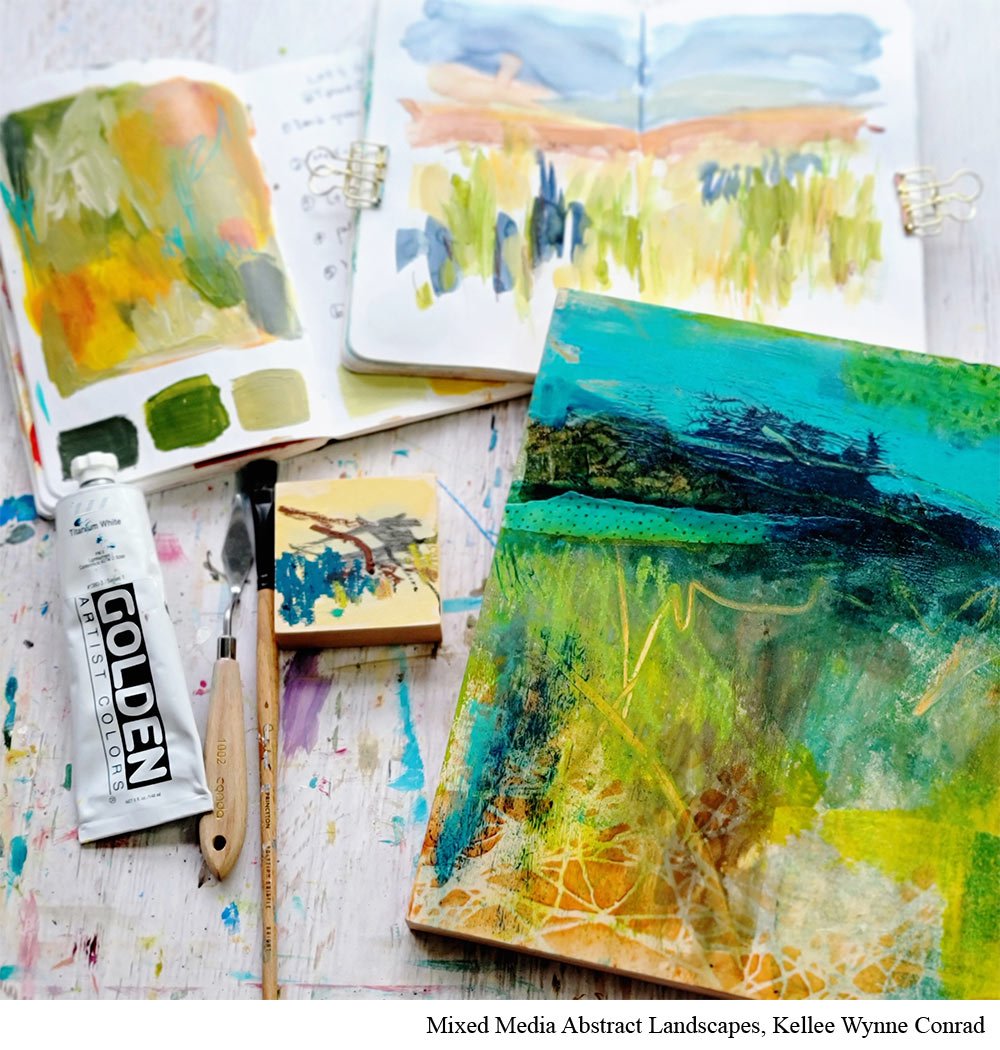Let Your Ideas Evolve
Having a fully formed idea is great… but what do you do if it’s not fully formed? Do you just toss it back into the ether hoping it’ll come back fully formed? Or start the painting before you know what you want it to be?
Mixed media artist Kellee Wynne Conrad (Ep.42) says absolutely not.
Conrad’s process involves a lot of thinking and she’s developed systems to make sure she can capture ideas so that they can evolve into something that really excites her.
Ideas will often begin in her art journals or on inexpensive copy paper. They will include a lot of scribbles and just the exploration of ideas.
These then develop into a subtle direction, be that landscapes or abstracted florals. She will also begin to get clarity on how many pieces she will work through and whether that will be on canvas or paper or board.
The idea will develop further into a color palette, six colors plus white. And these will be the colors she uses throughout the series.
Once she has this decided, she’s ready to begin actually laying down paint on paintings.
It’s a process that takes into account that ideas sometimes need time to come to fruition.
Put it to Practice:
If you let them, your ideas most likely have stages. Your very first thought about how to paint a landscape isn’t necessarily the best way to approach it. It isn’t even the way you’d have the most fun doing it.
Ideas take time to emerge.
If you find yourself going straight to your surface with paint, try a few paintings where you first go to a sketchbook. Do a quick sketch of your idea. Make sure you actually like what those first ideas look like on the page in physical form.
Then adjust your ideas as necessary. It takes just a few minutes and it’s easy to make changes. After all, it’s just a sketchbook or cheap copy paper. No one needs to see it. You’re free to change your mind.
Then when you like what you see, when the idea has had a bit of time to develop, pull out your brushes.
At first, this might make your process feel rushed. After all, you now have to GET THROUGH this step to get to the good stuff.
But after a while your feelings about this might change. You might like that there’s a part of your process where there is no pressure. Where you just let your ideas play in true freedom. You might be surprised that this becomes your favorite part of the painting.
Get practical advice from today’s best painters sent straight to your inbox by signing up for the newsletter below.


